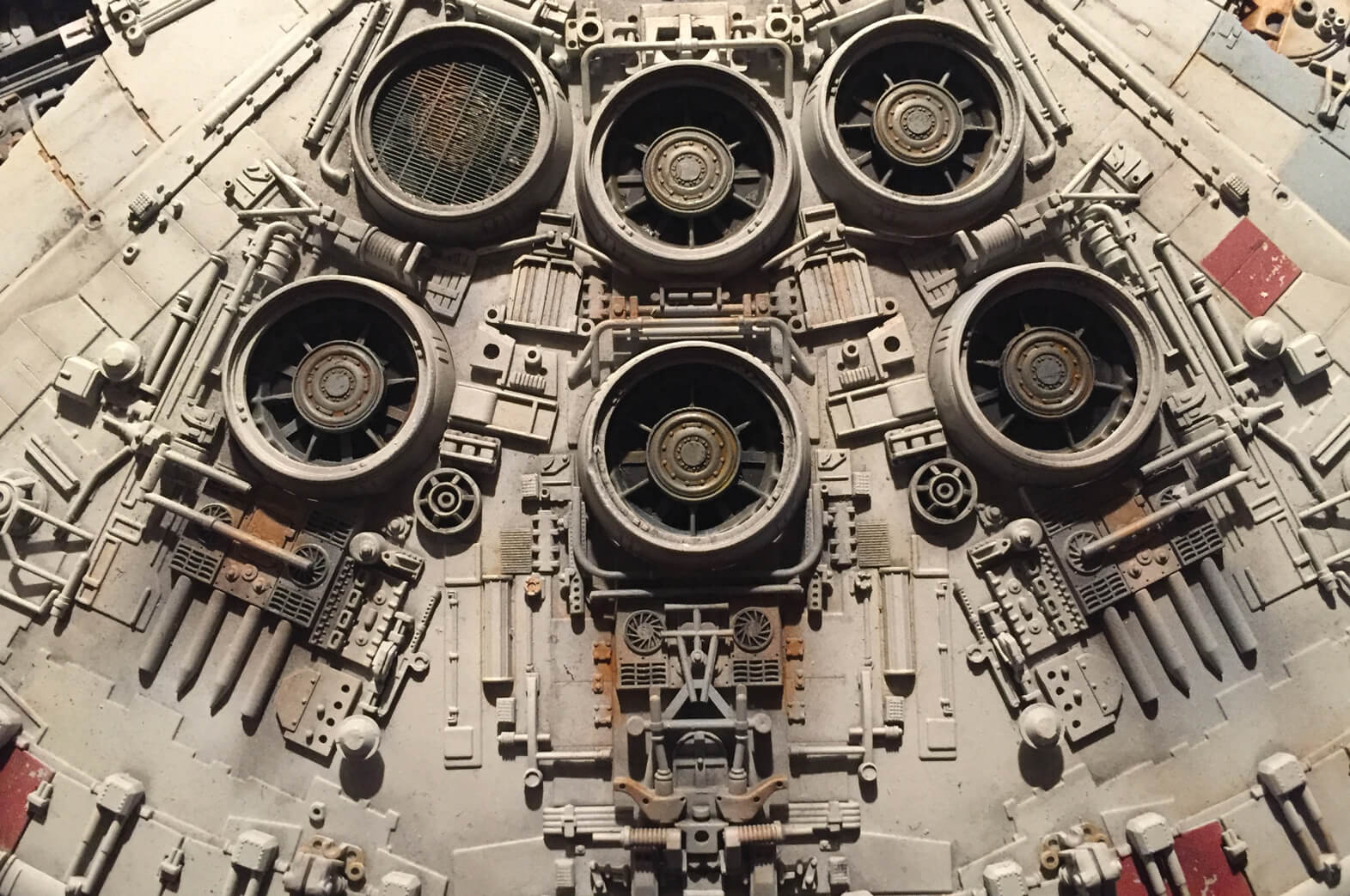Reambiguation
What is a greeble?
D. Graham Burnett

By 1996, the term “greeble”—an English neologism of uncertain origin—had come to designate two suggestively cognate entities. On the East Coast of the United States, a small group of psychologists and cognitive scientists (centered on Yale University) were, by that year, using the word to denominate a set of digitally rendered anthropomorphic forms developed for use as visual stimuli in facial recognition experiments. On the West Coast, among an elite coterie of Hollywood-oriented special-effects gurus and model-makers, the same term had been used for some time to refer to small, texturing forms that, when appliquéd to the surface of larger structures, convey an illusionistic sense of grandeur and intricacy.
It is the intention of this research note first, briefly to introduce and contextualize both these greeble-kinds; and then, speculatively to elaborate and weigh potential philological, genealogical, and conceptual links between the homonymous usages.
Our results will be inconclusive. But conclusions should, as a rule, be treated with suspicion.
What can be said with certainty is that these early “greebling” processes (the term regularly serves as a predicate in this setting) involved intensive manual labor with actual, physical model-making. “Kit-bashing,” the reappropriation of parts from commercial plastic hobbyist models, served as the dominant shop practice.[2] The skunk-works team that would eventually become Industrial Light & Magic excelled in this repurposing of the myriad microcomponents of conventional airplane, car, and locomotive model kits—which bits, suitably reconfigured and strategically superglued all over the hulls of the larger spaceship forms, created exquisite tessellations of panel and circuit, hose and portal. Considerable artistry was involved, in that even a modestly mechanical eye reads the “plausibility” of such arrays quite intuitively—pipes must go somewhere and gears need to meet other gears. All such detailing is handcraft. You cannot, as the saying goes, just “dip the model in glue, and roll it in junk.” In addition, distinctive parts with high recognition value among modeling buffs (automobile air filters, the air intake of a MIG fighter, the side panels of a train caboose) either had to be omitted or détourned with sufficient skill so as to pass unnoticed in a close-up shot.